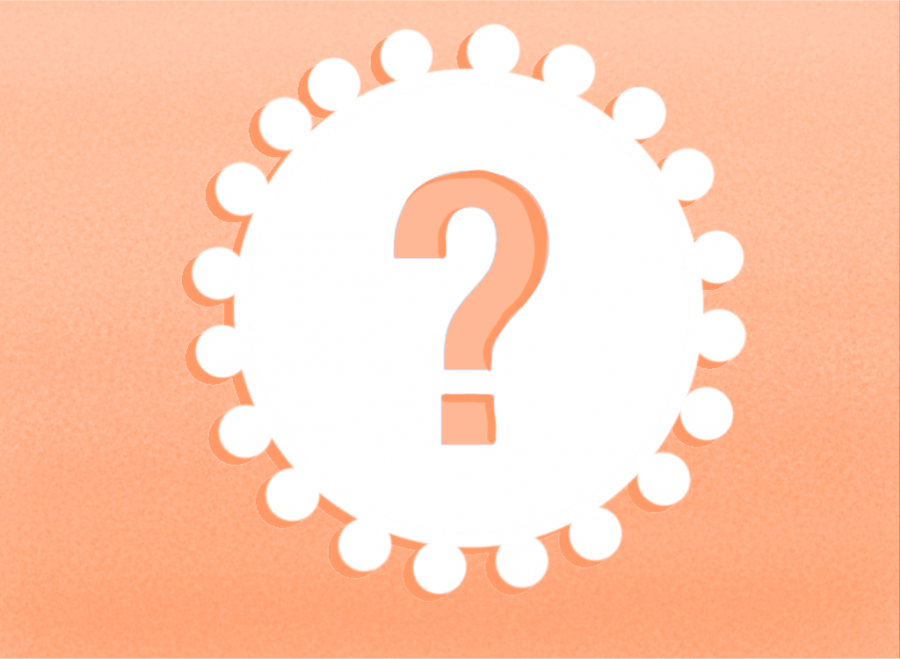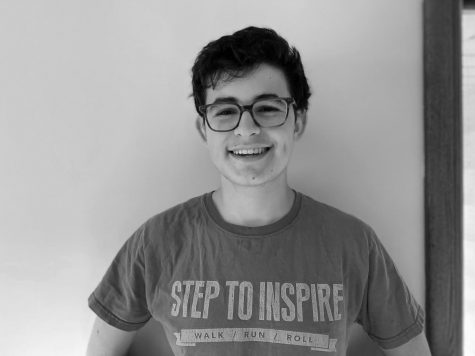Fact-checking the pandemic
Amid the flurry of information, Echo answers your questions
Art by Maggie Klaers. As the pandemic spreads, misinformation seems to spreading more and more. Echo seeks to answer your questions and concerns on the virus.
March 15, 2020
This story is updated as of 10:00 p.m. March 15.
In hectic times it is easy to give in to the trap of fake news. To counteract this misinformation, Echo asked its Instagram followers to submit questions that we have done our best to answer below. If you have any other questions or concerns, feel free to contact Echo via Instagram and Facebook @slpecho, email us at slpecho@gmail.com or leave a comment on our website slpecho.com.
How bad is the virus?
The COVID-19 appears to be deadlier than influenza with an estimated death rate of around 2 percent compared to the flu’s 0.1 percent death rate, according to The New York Times. As of 1 p.m. March 15, there are 35 cases in Minnesota, 2,808 cases in the United States and 156,800 infected worldwide with 5,762 dead.
What are the long term effects of COVID-19?
Since this strand of COVID-19 is so new, the long term effects of those infected with the virus are currently unknown. However, it is reported that some individuals in China who already had recovered from COVID-19 once, contracted it again, according to The New York Times.
At what point are they going to cancel school?
Governor Tim Walz signed Executive Order 20-02 March 15 forcing all Minnesota schools to close before March 18 and until March 27. St. Louis Park Public Schools will be closing March 17 for students so teachers and staff can prepare for distance learning. School will be in session March 16 to help prepare students and families for the technology options, however, students will not be penalized for staying home.
Should I be wearing a mask at school?
According to the World Health Organization, only those who are taking care of others with COVID-19 or are sick themselves should wear masks. In general, masks are more effective at containing one’s own coughs and sneezes than at preventing contact with other people’s germs. In addition, masks are only effective if the individual understands how to properly use it and frequently washes their hands.
What does it mean to social distance? With examples.
Social distancing refers to distancing yourself from others. It is recommended to stay at least 6 feet apart from others when possible. Also, try to limit the number of gatherings you attend, both large and small. Examples of social distancing include staying home from school, work and all non-essential events, according to the Center for Disease Control and Prevention.
Will our school be moving to an online school?
St. Louis Park Public Schools have announced that students and staff will work out a system of distance learning, but have yet to specify exactly what that system would entail, according to a phone blast sent out to St. Louis Park families.
I heard the District will be providing childcare for some students, is that true?
In his executive order, Gov. Walz said all districts must provide childcare for children under 12 of emergency workers and must support at-risk families such as those of low-income backgrounds, according to Minnesota Executive Order 20-02. However, St. Louis Park has yet to announce its own plan to support families.
What will happen to sports?
According to the Minnesota State High School League, all sports and strength and conditioning are suspended indefinitely starting March 16.
Will the school have to go into the summer?
According to Minnesota Executive order 20-02, Minnesota’s required amount of school days for the 2019-2020 school will be reduced to accommodate the days off.
What does this mean for activities that happen later in the year?
It is unclear what will happen in the upcoming months but state officials and St. Louis Park Public Schools are monitoring the situation and Echo will update as information becomes public.
What effect will it have on IB/AP testing?
According to Mary Cathryn Ricker, the Commissioner of the Minnesota Department of Education, the companies that orchestrate IB, AP and other tests have yet to announce plans.
How many countries have a case of COVID-19?
According to The New York Times, COVID-19 has been confirmed in 131 countries.
How many people have recovered from having COVID-19
Of the 169,532 confirmed COVID-19 cases, 77,753 have recovered.
Are black people more likely to get coronavirus?
According to CNN, black people are no more or less at risk of catching the virus from a biological standpoint.
Will we have spring break?
St. Louis Park Public Schools announced students will be out of school from March 17 to April 6. This includes nearly two weeks off to counteract COVID-19 and the pre-scheduled spring break.
Why is there such a big panic when less than 100 people in the country have died?
The issue with COVID-19 at the moment is not necessarily who has died so far, but who may die in the future. Although the death rate is only around 2 percent, the virus is highly contagious. According to the Center for Disease Control and Prevention, as many as 160 million to 214 million could be infected and as many as 200,000 to 1.7 million people could eventually die from COVID-19 in the United States alone if proper action is not taken.
Should we be scared?
These are scary times, but there is no reason to panic. Although the worst-case scenario projections can be nerve-racking to read, officials at the local and state level are taking action and the Trump Administration has recently begun to accept the severity of the pandemic, according to The New York Times.
Does anyone know how it started?
The virus is believed to have been started at a seafood and poultry market in Wuhan China were dozens of people became infected with an unknown illness back in late December/early January, according to The New York Times.
How likely am I to catch it as a teenager?
According to The New York Times, it appears as if teenagers are equally susceptible to catching COVID-19, however, symptoms are much less severe for younger people in general.
Why does everyone need to partake in social distancing?
According to The Today Show, social distancing means avoiding close contact with other individuals. This is important as the virus mainly spreads through liquid droplets from sneezes and coughs which cannot travel very far. If we remain distant from one another, it becomes more difficult for the virus to spread quickly.
How long does the virus last on surfaces?
According to NPR, COVID-19 can survive on a hard surface for 2-3 days.
How long is the pandemic expected to last?
As the number of infected individuals on the rise, it is unclear how long the pandemic will last for, according to the Washington Post.
How can I tell if I have COVID-19 and not the flu?
Although many symptoms overlap, COVID-19 also can cause shortness of breath and trouble breathing. In addition, while the flu symptoms can develop quickly, COVID-19 symptoms typically develop gradually and worsen over time, according to CNN.
Is anyone working on a vaccine?
According to NBC, a vaccine is in the works, however, due to strict regulations, it could be over a year before the vaccine is made available to the public.
My dad is a cancer survivor, if he ends up with the virus will he die?
In general people with underlying conditions are at greater risk from COVID-19, however, doctors are able to effectively treat a large majority of patients. Though those at greater risk should also take greater precautions. We would recommend you reach out to a medical professional for more information.






